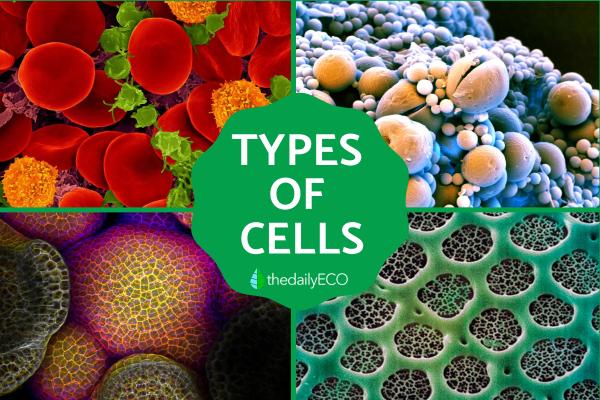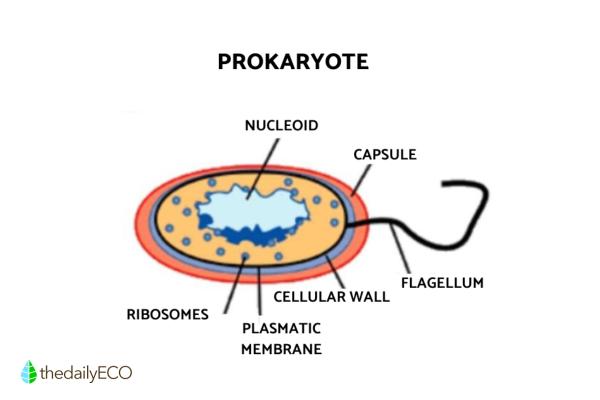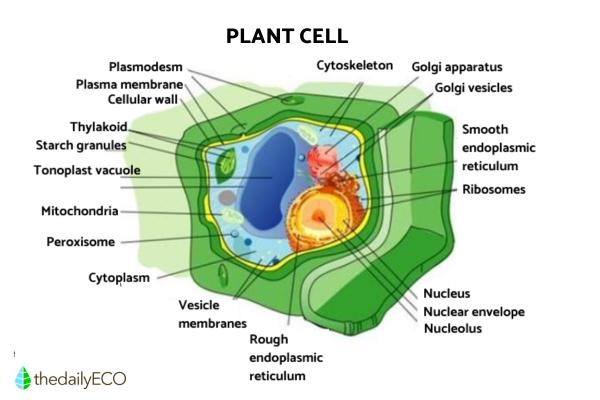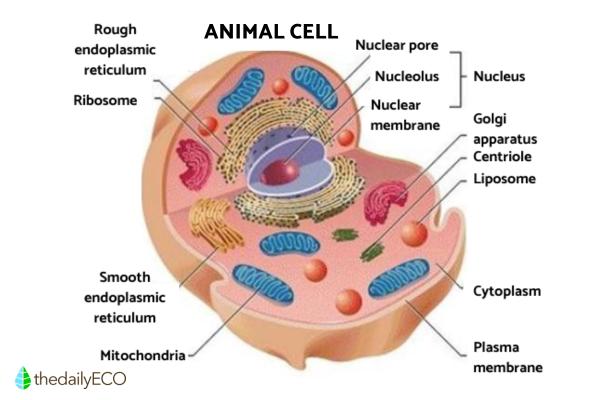Cell Types - Definition, Structure and Functions


All living things are made up of cells, the basic unit of life. From tiny organisms to complex animals, we all have cells that allow us to carry out basic functions. There are different ways to classify cells: according to their origin in evolution (prokaryotic and eukaryotic cells), according to their energy needs (plant and animal cell), according to their functions (muscle cells, epithelial cells, adipocytes, fibroblasts, immune cells, red blood cells, bone cells, etc.).
In the following thedailyECO article, we explain what the different types of cells are, their characteristics, structure, and functions.
What are cells and what are their characteristics?
Cells are the basic functional and morphological units of all living things. From the smallest or simplest beings to the largest or most complex creatures. Thus, there are unicellular living things (with only one cell), such as bacteria, or multicellular living things (with more than one cell), such as animals. It is estimated that the adult human body contains between 10 and 100 trillion cells.
There are different types of cells, but they all have the same abilities to develop, feed, grow, interact, and reproduce. Below is a list of the most important characteristics common to all cells:
- They are the basic structural building blocks of living things.
- Based on their complexity, two types of cells can be distinguished: prokaryotic and eukaryotic. Prokaryotic cells are simpler than eukaryotic cells. The main difference is that prokaryotic cells do not have a nucleus and their DNA is not encased in a nuclear membrane separating them from the cytoplasm.
- They contain genetic information stored in the form of DNA.
- They are separated from their environment by a plasmatic membrane, which at the same time allows them to communicate with the outside world.
- They synthesize proteins through ribosomes.
- They have a functioning metabolism with biomolecules.
- They have organelles suspended in an aqueous medium.
- They are building blocks from which various organisms form organs or tissues.
You may be interested in this other article, where we explain what cell organelles are and what their functions are.
Prokaryotic cell
All cells can be divided into two groups: Eukaryotes and Prokaryotes. Eukaryotes have a nucleus and membrane-enveloped organelles, whereas prokaryotes do not. Plants and animals are composed of large numbers of eukaryotic cells, while many microbes, such as bacteria, are composed of single cells.
Regarding prokaryotic cells, we can say the following:
They lack a true nucleus, which means that the genetic material normally stored in the nucleus is freely located in the cytoplasm, in a region called the nucleoid. This is exactly where the transcription of messenger RNA takes place, which is then immediately translated by ribosomes.
Their organelles also have no membrane, and their outer boundary consists of a peptidoglycan cell wall that gives it strength and a polysaccharide glycocalyx that protects it from phagocytosis.
Their organelles are arranged in the cytoplasm, which is fluid because it has no cytoskeleton.
Because they are unicellular organisms, they have evolved a number of adaptive organelles, such as flagella for mobilization, sexual pili for exchanging genetic information, polysaccharide capsules for protection from the environment, and others that may or may not occur.
Archaea and bacteria belong to this group, which is grouped in the Monera kingdom. Archaea are very primitive and for this reason have survived in extreme conditions, for example, without oxygen or at extremely high temperatures. In terms of metabolism, they differ from bacteria in that they are chemoautotrophic, meaning that they generate their energy through the synthesis of inorganic elements, whereas bacteria can have multiple modes of metabolism.
You may be interested in this other article, where we discuss the differences between eukaryotic and prokaryotic cells.

Eukaryotic cell
Now we will learn more about eukaryotic cells, which are the opposite of prokaryotic cells. As mentioned above, the eukaryotic cell is one that has a defined nucleus, covered by cytoplasm and protected by an envelope that constitutes the cell membrane. Let us take a look at some of their most important characteristics:
- The eukaryotic cell has a nucleus in which the genetic information is encapsulated, which is also arranged in chromosomes, and its organelles also have a membrane. RNA synthesis takes place in the nucleus, and proteins are synthesized by ribosomes in the cytoplasm.
- They have a highly developed cytoskeleton consisting of microtubules and carrying a variety of organelles that perform the functions of the cells.
- There is also the rough endoplasmic reticulum, which contains ribosomes for protein synthesis, and the smooth reticulum, which synthesizes lipids and secretes cellular toxins.
- The Golgi apparatus processes and transports products received from other organelles to form vesicles ready for use in or on the cell surface.
- The cell has lysosomes with enzymes to process molecules. Peroxisomes are similar, but specific for the breakdown of hydrogen peroxide produced by oxidation.
- They also have centrioles, which are necessary for the formation of the mitotic spindle in meiosis.
- They may have cilia or flagella, which are cells with projections for moving or trapping particles.
- They are large and measure between 10 and 30 µm. Not only that, but they are larger and more complex in structure than prokaryotic cells.
- Their functioning depends on the energy they receive from the nutrients they absorb or from sunlight, like plant cells.
- They reproduce and divide. Through mitosis and meiosis, eukaryotic cells can divide and create daughter cells.
Most living organisms, except for the bacteria and archaea mentioned earlier, have these cell types. Each group has special characteristics to respond to their needs.

Plant cell
Within eukaryotic cells, we can distinguish different types. The plant cell is a type of eukaryotic cell that forms the plant tissue of organisms from the kingdom Plantae.
The main function of the plant cell is photosynthesis, a chemical process in which plants use light energy to synthesize organic substances and then release oxygen. Unlike the animal cells, plant cells consist of a cell wall, which gives them rigidity and shape, and chloroplasts, which are used to carry out photosynthesis.
Let us take a closer look at some other main characteristics of these cells:
- The plant cell has similarities with the animal cell. For example, both are eukaryotic cells, have a differentiated nucleus, contain genetic hereditary information (DNA), a membrane and cytoplasm.
- Plant organisms require support from the central vacuole, which fills with water to create swelling and firmness.
- They are also characterized by containing chloroplasts with chlorophyll, pigments that capture sunlight to perform photosynthesis. They also give plants their green color.
- In many plant cells, the central vacuole is so large that it occupies almost the entire space of the cell, pushing and squeezing the other components toward the cell membrane.
- They have glyoxysomes, vesicles that are useful in germination to obtain carbohydrates from the fats in the seeds.
- Since they have a cell wall made of cellulose, they need plasmodesmata to communicate between cells.
You may be interested in this other article, where we discuss the differences between plant and animal cells.

Animal cell
The animal cell is a type of eukaryotic cell that forms the tissue of animals. It is responsible for the functions of nutrition and reproduction. As mentioned earlier, both the animal cell and the plant cell have defined nuclei. They differ in that they do not have the same organelles and serve different needs.
Animal cells are characterized by the fact that they do not have a cell wall, which allows them to take on different forms. They are found only in animals and humans.
- Plant cells are able to synthesize their own food, so they do not rely on other organisms for their nutrients. In contrast, animal cells require other organisms to obtain food and nutrients.
- Each animal cell consists of three important parts: the cell membrane, the cytoplasm, and the nucleus, which in turn consist of other parts that are vital for the cell to perform its function.
- These cells can join together to perform a specific function, for example, to form tissue.
- These cells can differentiate, i.e., specialize in a particular function, e.g., epithelial cells (protect the skin, cavities, and organs), bone cells (form bone), etc.
- The animal cell also does not have a cellulose cell wall. This structure is located on the outside of the plant cell and provides it with additional protection against water loss and external attacks.
You may be interested in this other article where we discuss the differences between DNA and RNA.

Protist cell
Protists are also eukaryotes, meaning their cells have a nucleus and other membrane-bound organelles. In addition, most protists are unicellular. Other than these characteristics, they have very little in common. Protists are all eukaryotic organisms that are not animals, plants, or fungi.
- These cells form unicellular organisms such as algae, protozoa or mycoids, so their cell type is very different.
- Although most are unicellular, there are also some multicellular protists. However, these cells do not exhibit cell specialization or differentiation into tissues. This means that all of their cells look the same and perform mostly the same function.
- They have in common is a food vacuole and a contractile vacuole for water regulation.
- They may contain chloroplasts, cellulose, calcium carbonate, and eye drops, among others.
You may be interested in this other article where we discuss the Protista kingdom, its main features and its importance.

Fungal cell
Fungal cells are eukaryotic, meaning they have a nucleus. They also have a rigid cell wall similar to that of plant cells. These are the characteristics of fungal cells:
- Like animals, fungi are heterotrophs and cannot photosynthesize.
- They have special organelles that regulate cytoplasmic products.
- They also have lomasomes (membranous structure found between the cell wall and plasma membrane) for extracellular excretion.
- Their cells can form hyphae, thin and elongated structures like filaments that form the characteristic fungal mycelium or vegetative body.
- Some fungi, such as yeasts, may be unicellular, but larger fungi are usually multicellular.
- Like plant cells, they have plasmodemes for communication.
- The cell wall is not made of cellulose but of chitin, the same substance that gives insects the hardness of their exoskeleton.
- They are elongated cells that may contain multiple nuclei, and they have vacuoles but no chloroplasts because they do not photosynthesize.
You may be interested in this other article, where we explain why the study of cells is so important.

If you want to read similar articles to Cell Types - Definition, Structure and Functions, we recommend you visit our Biology category.
- Angulo, A., Galindo, A., Avendaño, R., Pérez, C., 2009) Cell Biology. Available at http://dgep.uas.edu.mx/librosdigitales/6to_SEMESTRE/59_Biologia_Celular.pdf
- Jungbauer, W., Randler, C., Reck, M., Stripf, R., (2006) Netzwerk Biologie 2. Braunschweig: Schrödel.
- National Human Genome Research Institute (2018) Cell. Available at https://www.genome.gov/es/genetics-glossary/Celula
- Sanquea, M., (2018) Eukaryotic cell: cell organelles. Available at https://www.colegiosantodomingo.cl/wp-content/uploads/2018/06/01_Gu%C3%ADa-de-estudio_C%C3%A9lula-eucariota-Organelos-celulares.pdf











